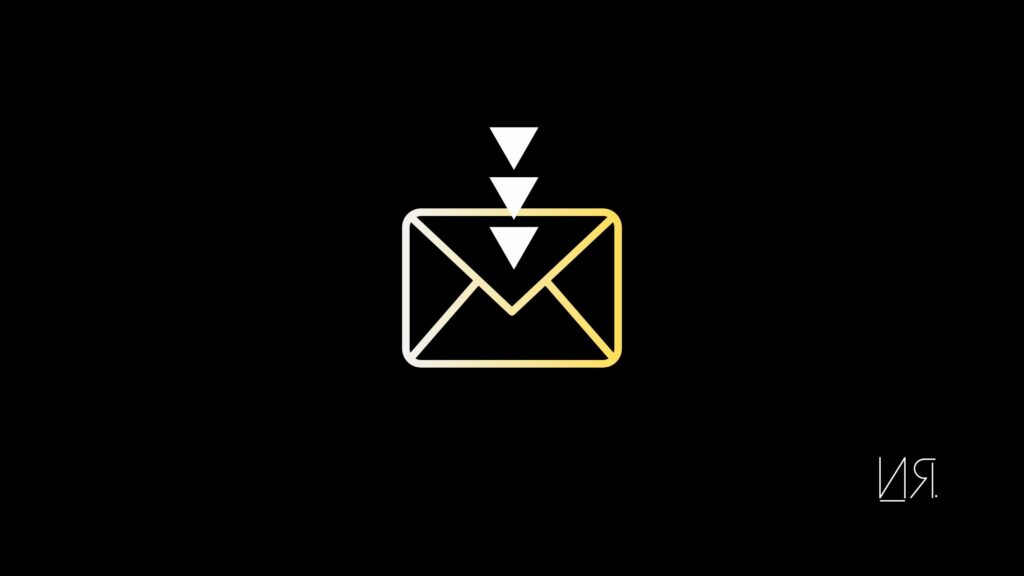This is part 7 of a 7-letter series about creating more opportunities in life and business.
Turn strangers to leads to friends.
Recently, a friend sent me an email asking if I was interested in an advisory role at a company he once worked for. I said sure. He connected me by email, I interviewed, and got the position.
The reason he reached out to me, besides having built a good bond with him, is that he also hears from me every week in my newsletter. So when the opportunity presented itself, I believe I was top of the mind for him.
Nurture relationship with your mailing list so that when an opportunity appears, you’re top of mind – this requires consistent association.
Not cutting through:
The world is too noisy now, so it’s hard to cut through. Plus most people do not have the time.
You have to build trust through consistent association. That happens when people consistently pair you with something you want to be associated with. Consistency is the key word here.
To do this, you require an engine that will keep you consistent.
Build a content engine to get in front of the right people. Let them come to you when they are ready to work with you. Before that, just keep sending out your signal.
7 Steps to Create an Inbound Content Engine So You Can Consistently Feed Yourself with Opportunities:
I recently worked with one of the top AI educators in the machine learning space.
I had to get him to the stage at a recent developer event in San Francisco. A journey that should take half a minute, ended up taking almost ten minutes.
Why?
With every step, he got stopped by developers, engineers, and founders who thanked him, asked questions, took selfies with him. For years, he has shared his knowledge and inspired a lot of people to get into data science, data engineering, and AI/ML. Over the last year of working with him, every Wednesday, he and his editorial team publish a weekly newsletter to millions of subscribers.
It’s been fascinating to see their process. No different from what I do here now. He chooses a topic, writes a draft, they edit together, choose graphics, then publish.
With more resources, he has built a team of writers, video editors, and AI education partners. This engine continues to help him build trust.
You can do the same with the resources you have.
Once you start with the principles, the tools might vary but the process is the same.
Build an inbound you will have a systematic approach to educate, attract, and convert people. You become a trusted advisor that creates, converts, and captures opportunities.
1. Define your goal and audience
Start with the end in mind.
What do you want to achieve and for who? A lot of times, most people just start creating content online. After a few hits and misses, they give up. Because they weren’t really clear on what they wanted to achieve to start out with.
Get clear on your goals.
Start with a 3-month goal.
Are you prioritizing the growth of your list? Want to nurture relationships? Trying to figure out the topic you enjoy creating around?
Create a clear measurable goal. Without this, you would be able to do the last step (measure and optimize).
2. Understand the buyer’s journey
Get clear on who you want to target.
When I started out, I created content for people who wanted to write books. Then it changed to people who wanted to start businesses. It changed again to people who wanted to grow an audience. I’ve now refined a segment for people growing an audience in technical B2B spaces.
The moral of the story is that your audience will evolve but you have to start with an audience in mind.
The goal of content creation is to anticipate problems of your audience and provide an easy-to-consume solution in the form of educational content. This is how you scale impact and trust. Once you define your audience, then you go through the stages of the buyer’s journey.
There are three main stages: awareness (when they realize they have a problem), consideration (when they consider the different solutions to the problem), and conversion (when they choose your solution).
Brainstorm and research ideas around each stage to share your expertise.
3. Content strategy: topic, content type, and calendar
I recently got off a call with a machine learning researcher and author.
When I asked him what his biggest challenge was: “Finding the right topic to write about.” When I pressed further, he said he wanted to create “digestible visuals around topics he’s interested in that will resonate with the audience, but also be timely.”
Choosing the right topic is a skill at the intersection of: creator’s interest, audience challenges, and timeliness (trends, news). Hitting those three, all the time, is a challenge that a lot of top creators have.
That’s why the consistency and volume helps cut through the noise.
Use a content calendar to keep you accountable.
Determine the type of content you will be creating, the format it will be in, and where you will be distributing and placing it. Map out your 3-month plan and then go granular with a weekly plan on how to execute it.
An easy tip is to have a monthly theme around a content pillar (2-4 topics that would provide the most value to your audience).
Focus on creating long-form pieces of content that you can later chop up into smaller pieces for distribution.
4. Content creation (value-focused, well written, clear CTAs)
Everyone has a plan until they get punched in the face.
That’s what Mike Tyson said. It’s alright to plan and have a strategy, but you don’t know whether it works until you start executing. Now, with your topics at each stage of the funnel, start building.
Get to the task.
But it does not have to be a painful process. You can build this with just 15 minutes a day. You remember that top AI expert I talked about, earlier. He reserves time on the weekend to write down ideas. He shares them with the team on Mondays saying “I’m not sure if there’s anything in here but here’s a topic we can work through.” Then they get multiple email responses on Wednesday when they publish on how helpful their publication is.
You are not going to get it perfect until you start.
Then you start and realize that perfection is a myth.
Follow the weekly content assembly system to plan, draft, edit, and publish.
5. Distribute, distribute, distribute (Repurpose)
I’ve posted every single day on LinkedIn for a year and a half now. It has driven 200k+ views.
I hardly have any viral posts. What I have is consistency.
People show up in my DMs. We chat, get on zoom calls, and sometimes work on opportunities together. The way I stay consistent is with my content creation engine, which allows me to repurpose my weekly newsletter into short LinkedIn posts.
Figure out where your audience resides and prioritize the social platform that would get you in front of them.
For some people in B2C (business to consumer) that’s tiktok, IG, or YouTube shorts. For people in B2B (business to business), that’s LinkedIn.
Post every, single, day!
Don’t forget, the goal of posting online is to get in front of your audience.
Once you get in front of them, try and stay in touch with them by getting their contact information. Give them a valuable lead experience magnet.
6. Measure and optimize: quantity is quality
When you start, it’s a volume game.
Quantity over quality. Because the data you get from quantity informs you on what your audience thinks is quality. You think you know what quality is. You don’t. At least, not what your audience thinks.
So stop overthinking it.
Your audience will vote on what is important to them. So you want to use the initial momentum and content velocity to get feedback. After 3-months, revisit your goals. Gauge your performance. How many replies and clicks did you get in your newsletter? How many reactions did you get in your LinkedIn posts?
A good measuring stick for your posts is to measure the median reactions and impressions and then use that as your new benchmark for the next three months. Double down on what performed better than median.
Keep sharing value, measuring results, and optimizing the engine.
7. Conversations are about listening:
We started this whole 7-part sequence about how great opportunities happen through conversations.
Posting online is a conversation. Talking to someone on the phone. The main task here is to practice listening to your audience. What are their pressing challenges? Where are they in the journey? Use this to create more topics to write about.
Once you get into this virtuous loop, you will constantly be able to provide value to your evolving audience.
Share the knowledge, sell the execution
Become a trusted advisor for what you do.
You achieve this by consistently building trust. This consistency requires an engine that makes it easy for you and your team to cut through the noise, get in front of the right audience, and help them solve their problems.
When you do this consistently, the right people come to you to have conversations. The right people come your way to create opportunities.
Yours truly,
Nifemi
- Step 1: Clarify your “authority signal”
- Step 2: Turn discovery into opportunities
- Step 3 & 4: Build a conversation starters: with narrative banks and structure
- Step 5: Stack Content Like a System
- Step 6: Design a Lead Magnet That Works
- Step 7: Build Your Inbound Engine {you’re here}
- Bonus: The trust loop and the practice



